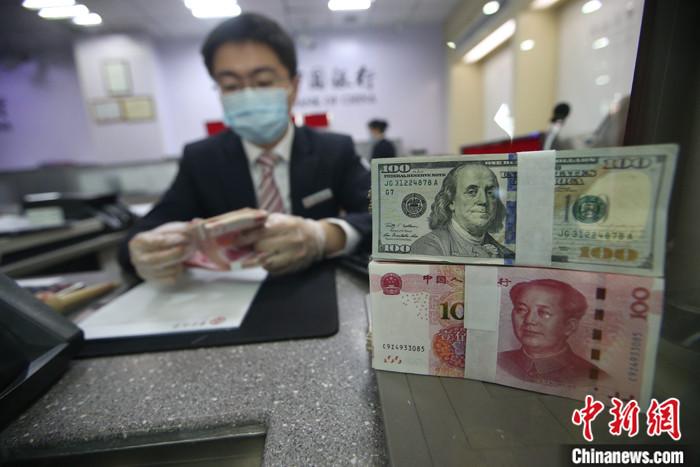China News Service, March 26. According to the website of the State Administration of Foreign Exchange, Wang Chunying, deputy director and spokesperson of the State Administration of Foreign Exchange, answered reporters' questions on the foreign debt data at the end of 2020 on the 26th.
Wang Chunying introduced that China's foreign debt grew steadily in the fourth quarter of 2020.
As of the end of December 2020, China's full-caliber (including domestic and foreign currencies) foreign debt balance was US$2.4008 billion, an increase of US$92.5 billion or 4% from the end of September 2020.
The increase in foreign debt was mainly due to the increase in foreign investors' holdings of domestic RMB bonds.
Data map: A bank employee is counting currency.
Photo by China News Agency reporter Zhang Yun
In addition, Wang Chunying pointed out that China's foreign debt structure has been further optimized.
From the perspective of the currency structure of foreign debt, domestic currency foreign debt accounted for 42%, an increase of 3 percentage points from the end of September 2020; from the perspective of the maturity structure of foreign debt, medium and long-term foreign debt accounted for 45%, an increase of 2 percentage points from the end of September 2020.
In response to China's foreign debt situation, Wang Chunying said that the steady increase in the scale of foreign debt is an objective result of China's economic development.
In 2020, China will achieve major strategic results in coordinating epidemic prevention and control and economic and social development. Enterprises will be the first to resume work and production. GDP will increase by 2.3% year-on-year, becoming the only major economy in the world to achieve positive growth.
This is the main reason why China attracts foreign capital inflows, including foreign debt.
Wang Chunying also mentioned that China continues to promote the reform of foreign debt facilitation to better serve the real economy.
The People’s Bank of China and the State Administration of Foreign Exchange have taken multiple measures to provide cross-border financing facilities for enterprises, and ease financing of enterprises, especially small and medium-sized enterprises and private enterprises, through timely adjustment of macro-prudential policies on cross-border financing, launching a pilot program for foreign debt facilitation, and implementing a pilot one-off foreign debt registration. Difficult and expensive financing issues, and earnestly support the development of the real economy.
In addition, Wang Chunying also said that China's foreign debt risk is generally controllable.
At the end of 2020, China’s foreign debt debt ratio (the ratio of foreign debt balance to GDP) was 16.3%, the debt ratio (the ratio of foreign debt balance to trade export income) was 87.9%, and the debt service ratio (foreign debt service The ratio of export income) is 6.5%, and the ratio of short-term foreign debt to foreign exchange reserves is 40.9%.
The above indicators are all within the internationally recognized safety lines (20%, 100%, 20% and 100% respectively).
Wang Chunying emphasized that at present, there are still many uncertain factors in the external environment, but the fundamentals of the long-term improvement of China's economy have not changed. It is expected that foreign debt will continue to operate smoothly in the future.

